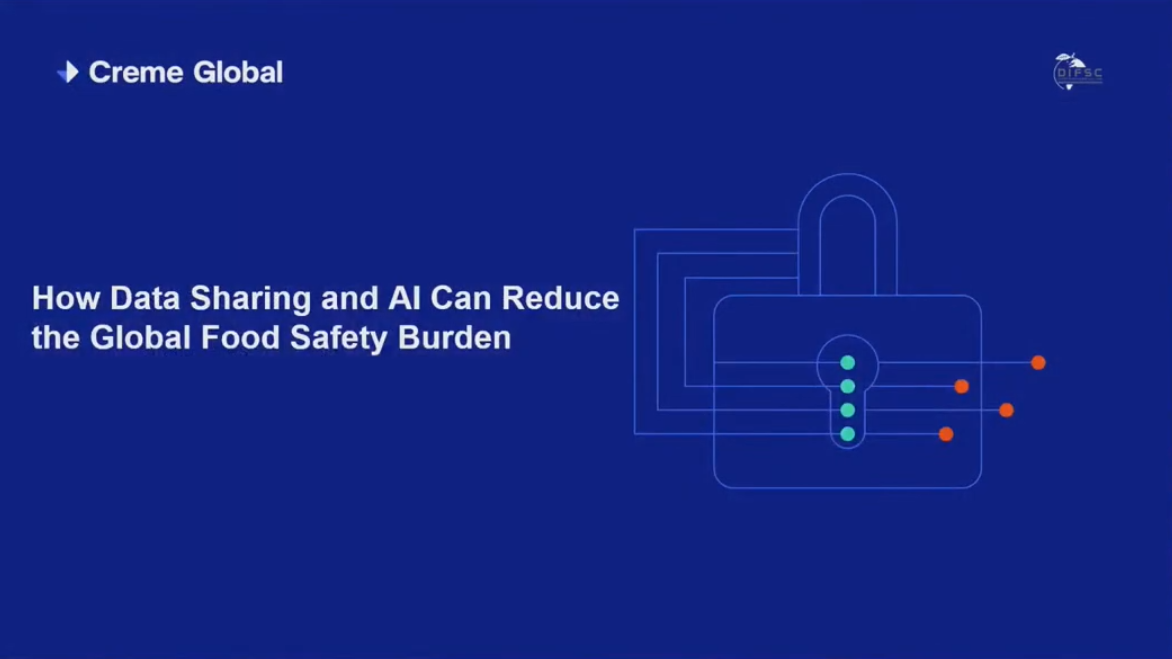Creme Global’s Commercial Director, Brendan Ring, will speak at the upcoming IAFP 2021 European Symposium which kicks off on April 27th.
The food industry has always been a beacon for innovation. They proactively review and implement change to continually ensure the safety and wellbeing of consumers. Even with this mandate, the tools and techniques being used are not enough. The World Health Organisation estimates that unsafe food causes 600 million cases of foodborne diseases and 420 000 deaths every year – which is really quite a shocking number. With the current regulation, controls and measures in place, food safety incidents still occur. Once again, the food industry is undergoing major change, in fact, the revolution has already begun.
So what’s the solution?
By harnessing the company’s own data, it can be used for early identification of trends and anomalies. Including Next Generation Sequencing (NGS) data to develop and train artificial intelligence & machine learning tools is driving the revolution. The promise of a truly new paradigm of food safety has now become a reality.
How does this work?
NGS is the key to enabling a truly preventive approach to food safety. But it can’t do it alone. Combined with data analytics, and the power of artificial intelligence, it can help us accurately detect a risk even before the microbe is actually present. This is of utmost importance because if a harmful microbe is present – it is already too late. AI enables a predictive approach, rather than a reactive one – it will help you detect a risk before the presence of the microbe. We can now look at the whole picture and provide key insights at crucial times. This powerful technology solution blows open the path towards a preventive approach. This is game changing.
Is this too complicated to implement?
No, is the quick answer and it can happen quickly.
It can be implemented as a once off check to validate a clean in place (CIP) or the effectiveness of a factory or equipment retrofit. Or it can be implemented on a section of a line, a complete production line, factory wide, or multiple factories.
It can start with a simple snapshot dashboard or a realtime dashboard that can monitor progress over time. With the appropriate data capture techniques in place, you can see what is currently happening in the factory, but more importantly, what is the likelihood of something happening in the future.
Case Studies
Let’s look at two different examples of using this approach in practice, one on a product level, the other on a factory wide level. In the first case it was observed that a particular batch of cheese was causing a blister on the packaging, being caused by off gassing Standard testing techniques were unable to identify any differences in this problem batch versus other batches. However using NGS gave a new insight, the differences in the ‘good’ and ‘bad’ batches was obvious and a solution quickly implemented. Previously undetectable issue was now clearly visible and preventable.
In another case study we focussed on the factory wide microbiome. During this project the microbiome of a number of food manufacturing factories were swabbed over a 2 year period. Creme Global analysed the results and provided an array of valuable insight to the food companies. The first thing that jumped out in the results was a seasonal variation in the factories microbiome. This allowed the factory to implement simple cleaning protocols based on the specific season. Further insights were provided around weather and factory zoning procedures. This next generation approach delivered powerful, never before seen insights and a deeper understanding as to what’s happening in the production environment.


